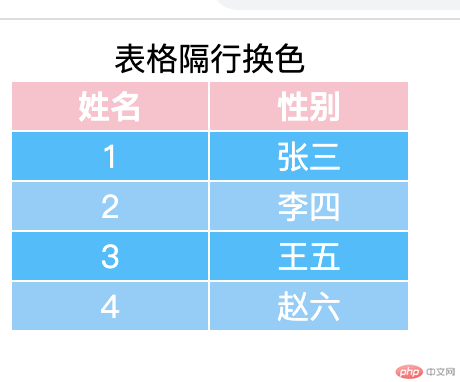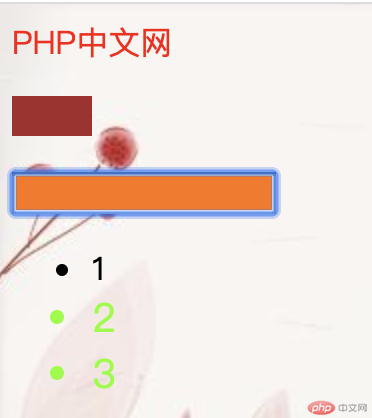CSS选择器
1.简单选择器
| 序号 |
选择器 |
描述 |
举例 |
| 1. |
元素选择器 |
根据元素名进行匹配 |
p {...} |
| 2. |
类选择器 |
根据class属性进行匹配 |
.active {...} |
| 3. |
ID选择器 |
根据id属性进行匹配,一般一个页面只有一个名称的id |
#top |
| 4. |
通配符选择器 |
选择全部元素,不区分类型,一般用于浏览器默认样式重置 |
* {...} |
| 5. |
分组选择器 |
同时选择多个不同类型的元素 |
h1,h2,h3 {...} |
| 6. |
属性选择器 |
根据元素的属性进行匹配 |
input[type="text"] {...} |
其中最常用的是:元素选择器,类选择器,ID选择器.
2.上下文选择器
- HTML文档具有一定的层次结构DOM(文档对象模型),称为DOM结构,或DOM树.
- 每一个元素, 在文档中, 都有自己的位置,即上下文关系
- 所以, 完全可以根据元素的上下文关系,来获取到它们
2.1一个元素的五种角色
| 序号 |
角色 |
描述 |
| 1. |
祖先元素 |
拥有子元素,孙元素等所有层级的后代元素 |
| 2. |
父级元素 |
仅拥有子元素层级的元素 |
| 3. |
兄弟元素 |
即层次相同的元素 |
| 4. |
后代元素 |
拥有子,孙…等所有更低层级的元素 |
| 5. |
子元素 |
即父级元素下的低一个层级的元素 |
2.2四种上下文选择器
| 序号 |
选择器 |
操作符 |
描述 |
举例 |
| 1. |
后代选择器 |
空格 |
选择当前元素的所有后代元素 |
div p {...} |
| 2. |
父子选择器 |
> |
选择当前元素的所有子元素 |
div > p {...} |
| 3. |
毗邻选择器 |
+ |
选择当前元素的同父级且相邻的元素 |
h1 + p {...} |
| 4. |
毗邻兄弟选择器 |
~ |
选择当前元素的同父级后续的所有元素 |
li.red ~ li {...} |
3.伪类选择器
- 学习之前,先分析上下文选择器的局限性,例如选择同一个父级下的第二个子元素,就没那么简单
- 而伪类就正好弥补了上下文选择器的短板, 所以伪类,大多数是基于文档中元素结构的
- 伪: 本意是假的,不存在的意思, 这里是特指, 不需要在元素上添加额外的属性来获取元素
按照应用场景可以对伪类选择器进行如下分类:
| 场景 |
描述 |
| 结构伪类 |
根据子元素的位置特征进行选择 |
| 表单伪类 |
根据表单控件状态特征进行选择 |
3.1结构伪类
3.1.1不分组匹配
| 序号 |
选择器 |
描述 |
举例 |
| 1 |
:first-child |
匹配第一个子元素 |
div :first-child |
| 2 |
:last-child |
匹配最后一个子元素 |
div :last-child |
| 3 |
:only-child |
选择元素的唯一子元素 |
div :only-child |
| 4 |
:nth-child(n) |
匹配任意位置的子元素 |
div :nth-child(n) |
| 5 |
:nth-last-child(n) |
匹配倒数任意位置的子元素 |
div :nth-last-child(n) |
3.3.2分组匹配
| 序号 |
选择器 |
描述 |
举例 |
| 1 |
:first-of-type |
匹配按类型分组后的第一个子元素 |
div :first-of-type |
| 2 |
:last-of-type |
匹配按类型分组后的最后一个子元素 |
div :last-of-type |
| 3 |
:only-of-type |
匹配按类型分组后的唯一子元素 |
div :only-of-type |
| 4 |
:nth-of-type() |
匹配按类型分组后的任意位置的子元素 |
div :nth-of-type(n) |
| 5 |
:nth-last-of-type() |
匹配按类型分组后倒数任意位置的子元素 |
div :nth-last-of-type(n) |
- 允许使用表达式来匹配一组元素,表达式中的”n”是从”0”开始计数,且必须写到前面
- “-n”表示获取前面一组元素,正数表示从指定位置获取余下元素
3.2其它伪类
| 序号 |
选择器 |
描述 |
| 1 |
:active |
向被激活的元素添加样式 |
| 2 |
:focus |
向拥有键盘输入焦点的元素添加样式 |
| 3 |
:hover |
当鼠标悬浮在元素上方时,向元素添加样式 |
| 4 |
:link |
向未被访问的链接添加样式 |
| 5 |
:visited |
向已被访问的链接添加样式 |
| 5 |
:root |
根元素,通常是html |
| 5 |
:empty |
选择没有任何子元素的元素(含文本节点) |
| 5 |
:not() |
排除与选择器参数匹配的元素 |
4.实例
<!doctype html><html lang="en"><head> <meta charset="UTF-8"> <meta name="viewport" content="width=device-width, user-scalable=no, initial-scale=1.0, maximum-scale=1.0, minimum-scale=1.0"> <meta http-equiv="X-UA-Compatible" content="ie=edge"> <style> * { margin: 0; padding: 0; } .container { width: 400px; text-align: center; } h1 { margin-bottom: 10px; color: darkgoldenrod; } ul>li { float: left; list-style-type: none; width: 20px; height: 20px; line-height: 20px; margin: 0 10px; border-radius: 10px; color: #ffffff; text-align: center; } ul li:first-child { background-color: red; } ul li:last-child { background-color: aqua; } ul li:nth-child(2) { background-color: blue; } ul li:nth-child(3), li:nth-child(3)+li { background-color: blueviolet; } #bg-purple { background-color: purple; } .bg-wheat { background-color: wheat; } li[title] { background-color: deeppink; } </style> <title>双色球</title></head><body> <div class="container"> <h1>双色球</h1> <ul> <li>1</li> <li>2</li> <li>3</li> <li>4</li> <li id="bg-purple">5</li> <li class="bg-wheat">6</li> <li class="bg-wheat">7</li> <li title="extra">8</li> <li title="extra">9</li> <li>10</li> </ul> </div></body></html>
<!DOCTYPE html><html lang="en"><head> <meta charset="UTF-8"> <meta name="viewport" content="width=device-width, initial-scale=1.0"> <style> table { width: 200px; border-collapse: collapse; text-align: center; } th, td { border: 1px solid; color: #ffffff; } th { background-color: pink; } /* 偶数行 */ tr:nth-child(even) { /* background-color: deepskyblue; */ } tr:nth-child(2n) { background-color: deepskyblue; } /* 奇数行 */ tr:nth-child(odd) { /* background-color: lightskyblue; */ } tr:nth-child(2n+1) { background-color: lightskyblue; } </style> <title>表格隔行换色</title></head><body> <table> <caption>表格隔行换色</caption> <tr> <th>姓名</th> <th>性别</th> </tr> <tr> <td>1</td> <td>张三</td> </tr> <tr> <td>2</td> <td>李四</td> </tr> <tr> <td>3</td> <td>王五</td> </tr> <tr> <td>4</td> <td>赵六</td> </tr> </table></body></html>
<!DOCTYPE html><html lang="en"><head> <meta charset="UTF-8"> <meta name="viewport" content="width=device-width, initial-scale=1.0"> <style> a { text-decoration: none; } a:link { color: #000000; } a:visited { color: red; } a:hover { text-decoration: underline; } a:active { background-color: blueviolet; } input:focus { background-color: #ff7300; } /* 根元素通常是html */ :root { background-image: url("images/bg.jpeg"); } p:empty { width: 40px; height: 20px; background-color: brown; } /* 否定伪类:选择器取反, 除了第一个li元素 */ li:not(.first) { font-size: 20px; color: chartreuse; } </style> <title>表单伪类</title></head><body> <a href="http://www.php.cn">PHP中文网</a> <!-- 没有内容的p元素 --> <p></p> <form> <input type="text" autofocus> </form> <ul> <li class="first">1</li> <li>2</li> <li>3</li> </ul></body></html>
5.效果图



6.总结
- 选择器是CSS的重点,学会了选择器相当于学会了CSS知识的一半
- 灵活的使用选择器,对布局和简化代码是友好的




